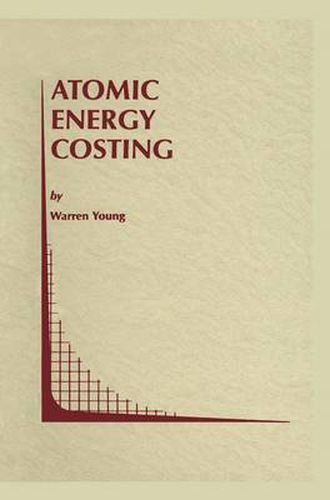Readings Newsletter
Become a Readings Member to make your shopping experience even easier.
Sign in or sign up for free!
You’re not far away from qualifying for FREE standard shipping within Australia
You’ve qualified for FREE standard shipping within Australia
The cart is loading…






This title is printed to order. This book may have been self-published. If so, we cannot guarantee the quality of the content. In the main most books will have gone through the editing process however some may not. We therefore suggest that you be aware of this before ordering this book. If in doubt check either the author or publisher’s details as we are unable to accept any returns unless they are faulty. Please contact us if you have any questions.
In the centennial year of the birth of Sir John Cockcroft, first master of my Cam bridge College, Churchill, and the first man to split the atomic nucleus by artificial means, it is indeed relevant to consider the outcome of his efforts at developing atomic power. From the earliest days of the construction of Calder Hall-the first nuclear power station in Britain-and the establishment of the British Atomic Re search Center at Harwell, and the Chalk River Nuclear Station in Canada, through the Windscale nuclear accident in Britain, up to the present, when some 20% of UK energy is derived from nuclear power, the Cockcroft legacy is felt. As the British historian Mark Goldie put it, in the pure and sanguine 1950s, Cockcroft had almost absolute faith in ‘peaceful atoms’ and in the boundless, almost cost free, energy that atoms would soon produce (Goldie, 1997, p. 21). But, as the eminent economist Frank Hahn recalled, the only failing Cockcroft had was that he wasn’t up to much in economics.
Indeed, Hahn recalled that he had to explain to Cockcroft the economic notion of optimum durability as it related to the interest rate in the context of building Churchill College with hand-made bricks.
After his explana tion, as Hahn recalled Cockcroft smiled and proceeded to order more hand-made bricks (Hahn, 1997, p. 27).
$9.00 standard shipping within Australia
FREE standard shipping within Australia for orders over $100.00
Express & International shipping calculated at checkout
This title is printed to order. This book may have been self-published. If so, we cannot guarantee the quality of the content. In the main most books will have gone through the editing process however some may not. We therefore suggest that you be aware of this before ordering this book. If in doubt check either the author or publisher’s details as we are unable to accept any returns unless they are faulty. Please contact us if you have any questions.
In the centennial year of the birth of Sir John Cockcroft, first master of my Cam bridge College, Churchill, and the first man to split the atomic nucleus by artificial means, it is indeed relevant to consider the outcome of his efforts at developing atomic power. From the earliest days of the construction of Calder Hall-the first nuclear power station in Britain-and the establishment of the British Atomic Re search Center at Harwell, and the Chalk River Nuclear Station in Canada, through the Windscale nuclear accident in Britain, up to the present, when some 20% of UK energy is derived from nuclear power, the Cockcroft legacy is felt. As the British historian Mark Goldie put it, in the pure and sanguine 1950s, Cockcroft had almost absolute faith in ‘peaceful atoms’ and in the boundless, almost cost free, energy that atoms would soon produce (Goldie, 1997, p. 21). But, as the eminent economist Frank Hahn recalled, the only failing Cockcroft had was that he wasn’t up to much in economics.
Indeed, Hahn recalled that he had to explain to Cockcroft the economic notion of optimum durability as it related to the interest rate in the context of building Churchill College with hand-made bricks.
After his explana tion, as Hahn recalled Cockcroft smiled and proceeded to order more hand-made bricks (Hahn, 1997, p. 27).